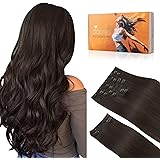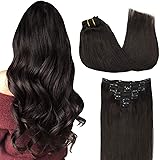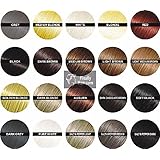Do you often find yourself in a beauty store or salon, wondering about the correct English terms for various hair products? It is often observed that a lack of specific vocabulary can make simple tasks, like buying shampoo or explaining a hairstyle, unexpectedly challenging. The video above introduces some fundamental English vocabulary related to common hair care items, providing a crucial starting point for language learners.
This article aims to significantly expand upon those basic terms, offering a more comprehensive guide to understanding and using English hair product vocabulary. By exploring these essential words, individuals are empowered to navigate personal care discussions and shopping experiences with greater confidence. A deeper understanding of these terms will undoubtedly enhance communication in various everyday situations.
Understanding Essential Hair Product Vocabulary
The foundation of understanding hair care in English begins with recognizing the core products used daily. These items are often encountered in homes, stores, and salons around the world, making their English names particularly useful for anyone seeking to improve their conversational skills or manage their own beauty regimen.
Common Hair Styling and Care Products
- Hair Spray: This product is utilized to hold a hairstyle in place. It is typically applied as a fine mist after styling is complete, providing a flexible or strong hold depending on the formulation. Hair spray helps maintain the desired look throughout the day.
- Hair Gel: Offering a stronger hold than many sprays, hair gel is frequently used to sculpt hair into specific shapes or to provide a wet-look finish. It is often applied to damp hair before styling, allowing for precise control over the hair’s direction and texture.
- Conditioner: Following shampoo, conditioner is applied to moisturize, detangle, and smooth the hair. Its purpose is to replenish moisture, improve manageability, and leave hair feeling soft and looking shiny. This product is an integral part of many hair washing routines.
- Comb: A comb is a tool with a row of teeth, used for detangling, smoothing, and styling hair. Various types exist, from wide-toothed combs for detangling wet hair to fine-toothed combs for precise styling.
- Hair Dye: This chemical product is employed to change the color of one’s hair. Hair dye can be used to cover grey hairs, enhance natural color, or completely transform a person’s look. It is available in many shades and forms, including permanent and semi-permanent options.
Expanding Your English Hair Care Vocabulary
Beyond the basics, a wider array of hair care vocabulary is frequently encountered. Acquiring these additional terms can greatly improve one’s ability to discuss personal grooming, understand product labels, and engage in conversations about beauty routines. Knowledge of these words facilitates a more nuanced understanding of the world of hair styling and maintenance.
Daily Hair Cleansing and Treatment Products
- Shampoo: Before conditioner, shampoo is used to cleanse the hair and scalp, removing dirt, oil, and product buildup. It is an essential first step in most hair washing routines, preparing the hair for further treatment.
- Mousse: A lighter styling product, mousse is often used to add volume, definition, and hold without weighing hair down. It is typically applied to damp hair before blow-drying or air-drying.
- Hair Serum: Serums are formulated to add shine, reduce frizz, and protect hair from environmental damage. A small amount is usually applied to dry or damp hair, focusing on the ends.
- Leave-in Conditioner: Unlike rinse-out conditioners, this product is applied after washing and left in the hair until the next wash. It provides continuous moisture, detangling, and protection.
- Dry Shampoo: For those days between washes, dry shampoo is sprayed onto the roots to absorb excess oil and refresh the hair. It helps extend the life of a hairstyle and adds volume.
Essential Hair Tools and Accessories
- Hairbrush: While a comb is used for detangling and precision, a hairbrush is typically used for smoothing, styling, and distributing natural oils. Brushes come in various shapes and sizes, each designed for different hair types and styling needs.
- Hair Tie/Elastic: These simple bands are used to secure hair, often to create ponytails, buns, or braids. They are a staple accessory for keeping hair out of the face.
- Bobby Pin: Small and discreet, bobby pins are used to secure smaller sections of hair, hold updos, or keep bangs in place. They are an indispensable tool for intricate hairstyles.
- Hair Dryer: An electronic device used to dry hair quickly with heated air. It is often paired with brushes to style hair as it dries.
- Straightener (Flat Iron): This heated styling tool is used to make hair smooth and straight. It works by pressing sections of hair between two hot plates.
- Curling Iron: Conversely, a curling iron is used to create waves or curls in the hair. Hair is wrapped around a heated barrel, forming a desired curl pattern.
Why Mastering English Hair Product Names is Important
The practical benefits of knowing these English hair product vocabulary terms extend far beyond mere recognition. When one is able to confidently name and describe these items, communication becomes significantly smoother in a variety of settings. This proficiency is particularly valuable for anyone traveling, living abroad, or simply engaging with English-speaking communities.
Practical Applications in Daily Life
- Shopping: Navigating the beauty aisle in an English-speaking country becomes much easier when product names are understood. Identifying exactly what is needed, from “shampoo for oily hair” to “strong-hold hairspray,” prevents confusion and ensures the correct purchase is made.
- Travel: While traveling, accessing essential personal care items is crucial. Knowledge of English terms allows for clear communication with hotel staff, pharmacists, or store assistants when seeking specific hair products.
- Salon Visits: When visiting a hair salon in an English-speaking environment, being able to articulate preferences for products or treatments is invaluable. For instance, requesting a “conditioning treatment” or asking about the “best hair dye for sensitive scalp” can lead to a more satisfactory experience.
- Conversations: Discussing beauty routines or giving advice about hair care is a common social interaction. Having the appropriate vocabulary permits one to participate in these conversations naturally and effectively, fostering better connections.
Tips for Learning and Remembering New Vocabulary
Acquiring new vocabulary, especially for practical items like hair products in English, requires consistent effort and effective strategies. Various techniques can be employed to solidify these terms in one’s memory, making them readily accessible when needed. By integrating these methods into a learning routine, learners can significantly enhance their language acquisition.
Effective Vocabulary Acquisition Strategies
- Flashcards: Creating physical or digital flashcards with the English word on one side and its definition or an image on the other is a proven method. Regular review of these cards helps in memorization and recall.
- Contextual Learning: Instead of simply memorizing words, try to understand them within sentences or scenarios. For example, picture yourself “applying hair gel” or “using a comb to detangle hair.” This contextual understanding helps cement the meaning and usage.
- Labeling: If possible, label actual hair products in your bathroom with their English names. This constant visual reinforcement can be highly effective in associating the word with the object.
- Practice Speaking: Use the words aloud as often as possible. Describe your own hair routine using these terms, or discuss them with a language partner. Active use helps transfer vocabulary from passive recognition to active production.
- Watch and Listen: Continue to watch videos like the one above, and seek out other English content related to beauty or personal care. Exposure to the words in natural speech patterns helps with pronunciation and understanding native usage.











